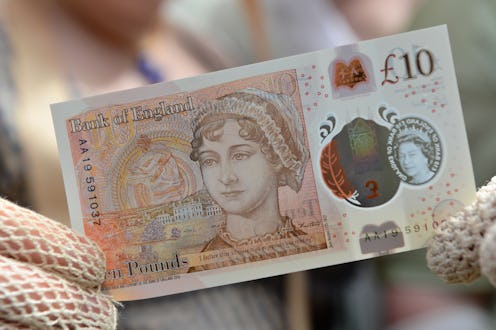Life
These 5 Female Scientists Totally Deserve A Place On The New £50 Note So Don't @ Me

The Bank of England has announced that a new face will take pride of place on the new £50 note. And you can help decide who. The only requirement is that the individual is a scientist and that they have passed away. Naturally, many people are petitioning for a woman to be given the prime spot, so I've come up with a list of female scientists for the £50 note to help matters.
Of course, the fact that the Bank of England has a "must be dead" rule makes it difficult for the list to be long. Women still only make up 23 percent of the UK's scientific workforce and years ago, the statistics were even worse, especially for women of colour who were effectively barred from the profession. In fact, some female contributions to fields including medicine, chemistry, and engineering have either been completely left out of the history books or conveniently forgotten by male colleagues.
Anyone is able to nominate a person of their choice and you have until December 14 to make your selection. Once all of the names have been collected, the Bank of England's panel will decide who will feature. In a statement, they said they are looking for "UK characters who have made an important contribution to our society and culture. We want the characters who make it onto our banknotes to come from different backgrounds and fields. When selecting a new character, we take into account who has featured on notes in the past."
Let's hope they take into account that no women, aside from the Queen and Jane Austen, have been selected before. If you need some inspiration for your nomination, here are a few names that have been routinely ignored over the years.
1Mary Seacole
Mary Seacole was born in 1805 in Kingston, Jamaica. Often compared to Florence Nightingale, her medical efforts have been severely overlooked. In 1854, she asked Britain's War Office to send her to help soldiers fighting in the Crimean War. They refused, so she travelled as close as she could, setting up her small-scale hospital in a British hotel near the Ukrainian city of Balaklava. Despite racism being rife at the time, she helped soldiers on the frontline and was applauded for her efforts when she returned back to England. She died in 1881.
2Dorothy Hodgkin
Born in 1910, Dorothy Hodgkin is the only British female winner of a science Nobel Prize. By tirelessly studying X-ray crystallography, she managed to figure out the structure of numerous biological molecules like penicillin. She won her award in 1964 but rose to fame once again in 1969 for determining the structure of insulin; something she had been working on for over three decades.
3Ada Lovelace
Ada Lovelace doesn't fall into the traditional category of a scientist. But her computer programming work helped start a technological revolution. Born in 1815, she met mathematics professor Charles Babbage in 1833. She became interested in his plans for a device called the Analytical Engine and set to work sketching highly detailed programs for the early computer. She sadly died of cancer at the age of 36 but is regarded around the world as the first computer programmer.
4Rosalind Franklin
You've probably come across Rosalind Franklin's name before. At the age of 15, it is said that she knew she wanted to be a scientist. Although her father discouraged her from entering a tough career, she didn't listen and went to Cambridge University to study chemistry in 1938. Her most famous accomplishment was her work examining how DNA was structured. These efforts eventually helped two men by the name of James Watson and Francis Crick to create the DNA double helix model. The two men earned a Nobel Prize for their discovery in 1962, but Franklin died from ovarian cancer in 1958.
5Mary Anning
Palaeontology also fits into the realm of science, according to the Bank of England. That makes Mary Anning, a woman who was born in 1799, a real contender for the face of the £50 note. Regarded as one of the best fossil hunters to ever walk the planet, she spent hours and hours looking for her "curiosities" along Dorset's Jurassic Coast. At first, she thought her discoveries were nothing more than weirdly-shaped stones but soon realised they were much more significant. By the end of her life in 1847, Anning had identified the skeletons of several dinosaurs and recovered fossilised marine creatures and had spent years as the go-to woman for fossil experts.
6
Each and every one of these women deserves their efforts to be recognised so nominate the one that inspires you the most or nominate them all if you have the time. The more of us that support them, the harder it will be for the panel to ignore the calls for equal representation.